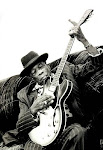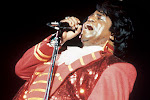
YYYY Excellent!
Whenever a band brings Brian Eno in to work on an album that means that the album is labeled as the bands “experimental” album. That is not necessarily a bad thing, having Eno onboard is like knowing you have reached a certain pinnacle in your career. On their new album, Viva La Vida, Coldplay has reached that place. From the instrumental opener, Life In Technicolor, played on a Persian santur, you know you are in for something a little different. While some bands try too quickly to make their Sgt. Pepper’s (can anyone say The Killers), it is a real trick to grow as a band while still holding on to what made people love you in the first place, and this is the genius of Coldplay. On each record they have created a new lushness to their sound, and the evolution from their first guitar centered album to this one is definable and subtle. If there is a constant from one album to the next it is Chris Martin’s lyrics. They move the listener somewhere between despair and redemption and are vague enough, and personal enough to be universal. Throughout the music is superbly composed with each sound, note, and riff intricately thought through and perfectly placed. Cemeteries of London is a classic English ghost story of the struggle between the spirit world and the living - each searching for their God - with the guitar taking on the voice of the specter and a well placed vocal break taking the role of God. Lost! explores the perils of never ceasing to reach for a brass ring in spite of adversity and consequences. Yes! is a somewhat obvious song about temptation with violin punctuations that seems to enhance the confusion of the temptation. (It is also a song that half way through its listed 7:07 tracking time becomes a different unlisted song, putting the annoying hidden track in the middle of the album instead of the end where it usually winds up) Viva La Vida and Violet Hill are the two overt political songs on the album. Viva La Vida criticizes the arrogance of power and the consequences of its abuse, and Violet Hill the inevitable fall from grace that comes from mixing religion and war. The final track Death and all of his friends ends itself where the album begins, with the out-tro music looping back into the opening of the first track. I’m not sure if this is a deliberate statement or not, but what it reminds me of is the Ouroboros, an ancient symbol of a snake that eats its own tail to sustain its life. The Ouroboros represents an eternal cycle of renewal, symbolizing the sense of something constantly re-creating itself, the eternal return, the cyclic Nature of the Universe: creation out of destruction, life out of death.
Whenever a band brings Brian Eno in to work on an album that means that the album is labeled as the bands “experimental” album. That is not necessarily a bad thing, having Eno onboard is like knowing you have reached a certain pinnacle in your career. On their new album, Viva La Vida, Coldplay has reached that place. From the instrumental opener, Life In Technicolor, played on a Persian santur, you know you are in for something a little different. While some bands try too quickly to make their Sgt. Pepper’s (can anyone say The Killers), it is a real trick to grow as a band while still holding on to what made people love you in the first place, and this is the genius of Coldplay. On each record they have created a new lushness to their sound, and the evolution from their first guitar centered album to this one is definable and subtle. If there is a constant from one album to the next it is Chris Martin’s lyrics. They move the listener somewhere between despair and redemption and are vague enough, and personal enough to be universal. Throughout the music is superbly composed with each sound, note, and riff intricately thought through and perfectly placed. Cemeteries of London is a classic English ghost story of the struggle between the spirit world and the living - each searching for their God - with the guitar taking on the voice of the specter and a well placed vocal break taking the role of God. Lost! explores the perils of never ceasing to reach for a brass ring in spite of adversity and consequences. Yes! is a somewhat obvious song about temptation with violin punctuations that seems to enhance the confusion of the temptation. (It is also a song that half way through its listed 7:07 tracking time becomes a different unlisted song, putting the annoying hidden track in the middle of the album instead of the end where it usually winds up) Viva La Vida and Violet Hill are the two overt political songs on the album. Viva La Vida criticizes the arrogance of power and the consequences of its abuse, and Violet Hill the inevitable fall from grace that comes from mixing religion and war. The final track Death and all of his friends ends itself where the album begins, with the out-tro music looping back into the opening of the first track. I’m not sure if this is a deliberate statement or not, but what it reminds me of is the Ouroboros, an ancient symbol of a snake that eats its own tail to sustain its life. The Ouroboros represents an eternal cycle of renewal, symbolizing the sense of something constantly re-creating itself, the eternal return, the cyclic Nature of the Universe: creation out of destruction, life out of death.









1 comment:
Hey. Welcome back. It's been a while. Have you not been buying music, or just not reviewing it here?
Post a Comment